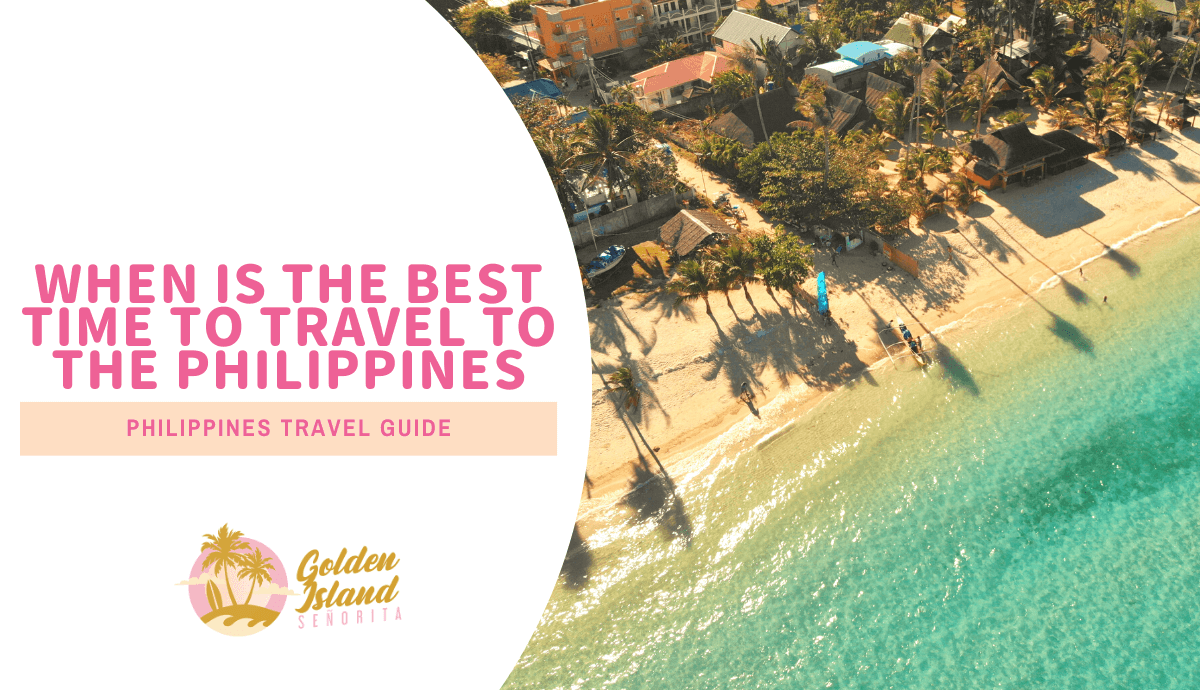When it comes to planning a trip to the Philippines, understanding the best time to visit can significantly enhance your experience in this enchanting tropical paradise. With its breathtaking landscapes, vibrant culture, and warm hospitality, the Philippines offers an array of attractions for every traveler. In this comprehensive guide, we will delve into the best time to travel to the Philippines, considering weather patterns, seasonal highlights, and key factors to ensure an unforgettable adventure. Whether you’re seeking pristine beaches, thrilling festivals, or unique cultural experiences, this article will help you make the most of your journey.
Understanding the Climate
The Philippines experiences a tropical climate with two distinct seasons: the dry season and the wet season.
The dry season, often referred to as the high season, typically spans from November to April. During this time, the weather is characterized by clear skies, abundant sunshine, and relatively low humidity. These ideal conditions make it the perfect time for beach activities, island hopping, and exploring the country’s natural wonders. Average temperatures range from 24°C to 32°C (75°F to 90°F), with variations across different regions.
On the other hand, the wet season, also known as the low season, falls between May and October. This period brings increased humidity and regular rainfall due to the southwest monsoon, locally known as “habagat.” While the wet season may deter some travelers, it also has its own allure. The landscape transforms into lush greenery, and the reduced crowds provide an opportunity for a more immersive experience. However, it’s important to note that typhoons can occur during this season, primarily between July and October, so it is essential to stay updated on weather forecasts and take necessary precautions.
Best Time to Travel to the Philippines
- Dry Season (November to April):
- Optimal time for travel due to favorable weather.
- Sunny days with minimal rainfall ensure enjoyable outdoor activities.
- Perfect for beach escapades, island hopping, and exploring nature.
- Chance to participate in vibrant festivals and cultural events.
Seasonal Highlights and Festivals
To make the most of your visit to the Philippines, it’s worth considering the exciting seasonal highlights and festivals that occur throughout the year:
a. Sinulog Festival (January): Kickstarting the year, the Sinulog Festival in Cebu City is a vibrant celebration that honors the Santo Niño (Child Jesus). Expect a grand procession, traditional dances, and street parties, as well as cultural exhibits showcasing the region’s rich history and heritage.
b. Panagbenga Festival (February): Known as the “Flower Festival,” Panagbenga takes place in Baguio City. This month-long festival showcases colorful flower floats, street dancing, and various cultural activities. The grand float parade is a highlight not to be missed.
c. Pahiyas Festival (May): Celebrated in Lucban, Quezon, the Pahiyas Festival is a thanksgiving event dedicated to San Isidro Labrador, the patron saint of farmers. During this festival, houses are adorned with colorful rice decorations, creating a captivating display of creativity and gratitude.
d. Kadayawan Festival (August): Taking place in Davao City, Kadayawan Festival is a week-long celebration of abundance, cultural diversity, and the region’s indigenous heritage. Experience street parades, traditional dances, music, and indulge in local delicacies.
Destination-Specific Considerations
The Philippines is a diverse country with an array of stunning destinations, each with its own unique charm. Here are some popular regions and their optimal times to visit:
a. Palawan: Renowned for its pristine beaches and mesmerizing landscapes, Palawan is best visited during the dry season, from November to April. El Nido and Coron, known for their crystal-clear waters, limestone cliffs, and vibrant marine life, are must-visit destinations for island-hopping enthusiasts and nature lovers.
b. Boracay: Famed for its powdery white sands and vibrant nightlife, Boracay beckons visitors year-round. However, the dry season, from December to May, offers the best weather conditions for water sports, beach activities, and enjoying the island’s vibrant atmosphere.
c. Siargao: Recognized as the “Surfing Capital of the Philippines,” Siargao entices adventure seekers with its renowned surf breaks, pristine beaches, and laid-back island vibes. The best time to catch the epic waves is from July to November when the swell is at its peak. For a more relaxed experience, consider visiting from December to May when the weather is milder, and the island offers tranquil beauty.
d. Banaue Rice Terraces: A UNESCO World Heritage site, the Banaue Rice Terraces in Ifugao Province showcase magnificent terraced landscapes, a testament to the indigenous people’s agricultural prowess. The ideal time to visit is during the dry season, particularly from February to May when the terraces are most vibrant and the weather is favorable for exploring the region.
Conclusion
Determining the best time to travel to the Philippines depends on various factors such as weather preferences, festival interests, and desired activities. The dry season offers sunny days and ideal beach conditions, while the wet season presents a unique opportunity to experience the country’s lush landscapes and immerse yourself in local culture. By understanding the climate patterns and considering specific destinations and their seasonal highlights, you can plan an unforgettable journey to this tropical paradise. Embrace the warmth of the Filipino spirit, indulge in natural wonders, and create memories that will last a lifetime.


